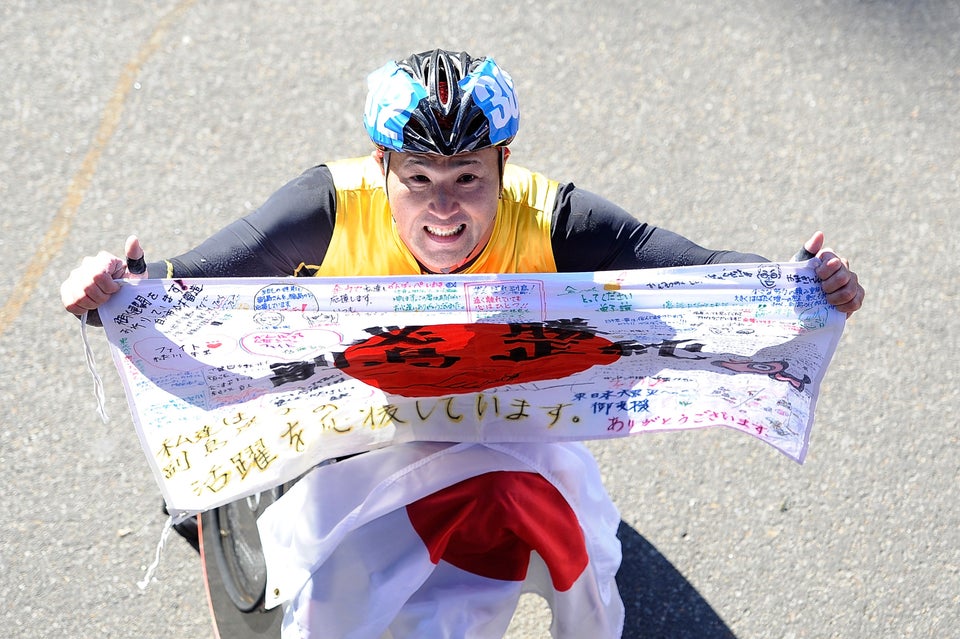Running is hard. And if you haven't hit the track or treadmill in months, the prospect of getting back into an exercise routine can be downright daunting.
That's not to say it isn't worth it: The benefits of regular exercise are both plentiful and proven: exercise can make you happier, ward off chronic diseases such as heart disease and cancer, and can even help you sleep better.
Need a little extra motivation? Sign up for a road race. Setting a specific goal, then making a financial commitment to participate, can be a powerful incentive to lace up your running shoes and hit the pavement.
Unfortunately, newbie runners have a relatively high risk for injury, according to a 2014 study. The study, published in the journal Plos One, found that 25 percent of novice runners got hurt after logging just 23 training miles, with injuries including shin splints, knee problems, Achilles issues and plantar fasciitis.
But fear not. We asked two fitness experts for insider training tips to help anyone safely turn into race runners. Here's what they said:
1. Say goodbye to static stretching
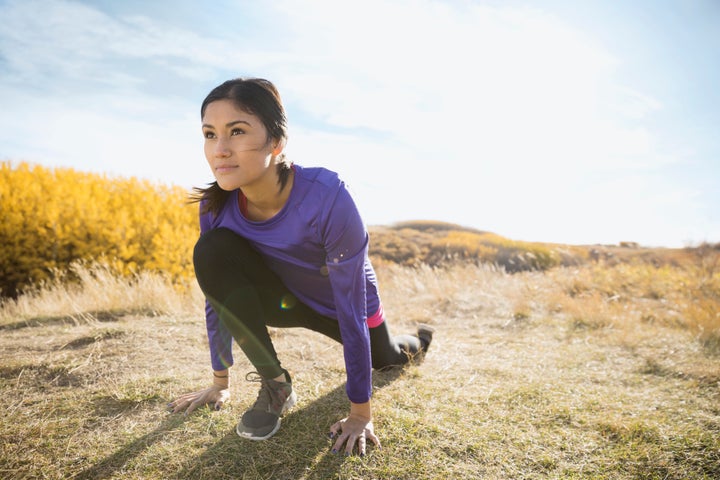
If you're stretching cold, or worse, not stretching at all before heading out for a run, you may be doing yourself more harm than good. "You definitely want to do a little something to get the muscles warmed up before you start running," said Rebecca Goldstein, a former track-and-field athlete and clinical director at Professional Physical Therapy in New York City.
Skipping this step commonly leads to injuries, she said: "Typical complaints, especially from novice runners, are hamstring and Achilles strains."
To prevent those and other injuries, your best bet is to go for a brisk five or 10 minute walk before your run. Then do some dynamic stretches that take your joints through a full range of motion, such as arm and leg swings, trunk rotations, walking lunges, jogging in place with high knees, butt kicks and ankle circles.
And lest you think you're off the hook once you finish running, Joe Ardito, founder of FitCrush personal training in New York City, says that post-workout stretches, like kneeling hip flexor stretches and calf raises, are just as important for staying injury- and pain-free.
"It’s important to always stretch," Ardito said. "You should never skip doing so."
2. Listen to your body

After a winter spent on the couch, you've thrown yourself into a training routine and you're sticking to your workout goals. The only problem? Your shins are starting to ache -- big time. If this sounds familiar, you may be a victim of overtraining, the downfall of would-be runners everywhere.
"It’s normal to be a little bit sore and have aches, especially if you've never run before," Goldstein said. "But you really want to make sure you're honing in on those achy signs and the soreness." In other words, don't brush off persistent aches and pains.
If you're not sure if what you're experiencing is run-of-the-mill soreness or an injury, Goldstein recommends taking two or three days off to monitor your body. If the pain doesn't start to improve in that time span, you should see a specialist, she said.
Both Goldstein and Ardito recommended incorporating cross-training as an injury-prevention tool.
"Running is a repetitive sport," Goldstein said. "It’s really important to change it up. Go out and do a run one day, and then the next day take a break, and then maybe the next day you can bike or do the elliptical. Then go back to running that fourth day."
3. Schedule a (self) massage
Massages aren't just relaxing indulgences, they're also a great pain recovery tool. If scheduling a weekly massage session isn't in your budget (and let's be real, it probably isn't), mastering the art of self-massage can make a huge difference in your training and recovery.
For persistently tight muscles -- such as IT bands (the muscle on the outside of the thigh), hamstrings, quads and calves -- Goldstein recommends foam rolling to loosen things up. Check out a few foam rolling techniques here.
"It’s a good alternative to a massage," Goldstein said. "You can even foam roll your low back if you're having some tightness there."
Icing aching shins is also a great way to address the shin splints, a painful shinbone condition that's common among runners, military members and dancers, according to The Mayo Clinic. But instead of sticking your leg in a bucket of ice water or grabbing a bag of frozen peas, do as the experts do and give yourself an ice massage:
Step 1: Fill a Dixie cup with water.
Step 2: Freeze.
Step 3: Peel off the bottom of the cup and use the ice to rub the sore area in a circle, for four or five minutes, until the sore spot goes numb.
"Ice massaging is great after you work out, just to get the inflammation down," Goldstein said. "And you’re giving yourself a little bit of a massage at the same time, which is nice."
4. Prevent shin splints with ankle- and calf-strengthening exercises
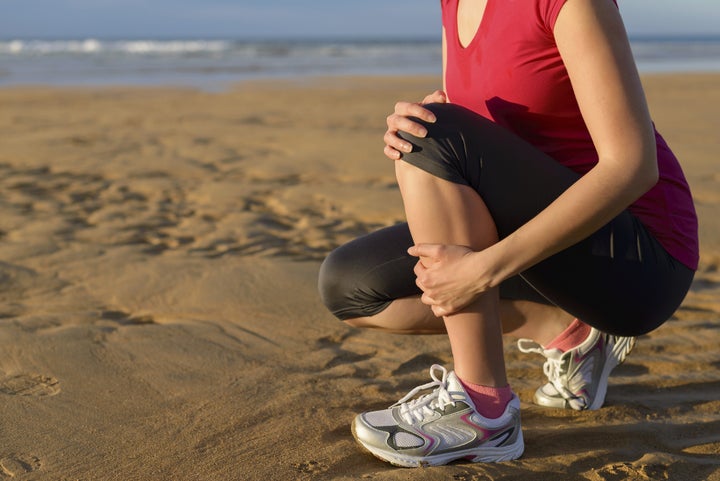
While treating shin splints is sometimes a necessary evil, you'd probably prefer to avoid development them in the first place.
"Preventing shin splits is tough," Ardito said, listing possible causes including uneven running surfaces, tight Achilles tendons, weak calf muscles, and foot pronation, or when the foot rolls inward while striking the ground.
Both Ardito and Goldstein recommend calf- and ankle-strengthening exercises to protect against shin splints. These include using a resistance band to improve ankle strength and doing calf raises to build up calf muscle.
If you're already in pain, taking it easy is the best medicine. "Treating shin splints usually comes from complete rest, along with icing and anti-inflammatory meds," Arido, said. "While you are healing, stationary cycling and elliptical machines are good low-impact cardio options."
5. Take the 'wet test' before buying new shoes
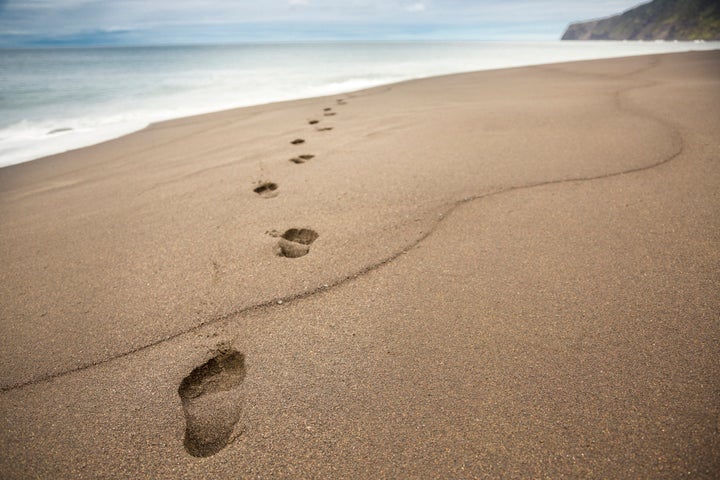
While we love a flashy pair of kicks as much as the next person, if you're going to be putting in serious training miles, it's important that your new shoes match your foot type rather than your sense of style. (Check out the anatomy of a running shoe.)
Running store salespeople can help determine whether you have high, low, or medium arches, and that distinction should drive which shoes you purchase.
Flatter feet roll inward (this is called pronation), and high arch feet roll outward (supination). Both flat and high arch runners benefit from shoes tailored to their arch type, which can help absorb the shock from pronation and supination. Lucky medium arch people can wear almost any shoes.
If you're curious about your arch type, try the "wet test" to determine where you fall on the arch spectrum. First, wet the sole of your foot. Now, press your foot onto a heavy piece of paper (a paper bag works well). Then compare your footprint to these Runner's World illustrations of high, low and medium arches (in general, the more arch you can see on your footprint, the flatter your foot is).
Once you've determined your arch type and selected a pair of shoes that fits comfortably, take them for a practice run while you're still in the store. "If there’s no shoe that really fits properly, that’s when I would recommend orthotics, or inserts to put in the shoe," Goldstein said.
6. Training for a half-marathon? Buy two pairs of identical sneakers
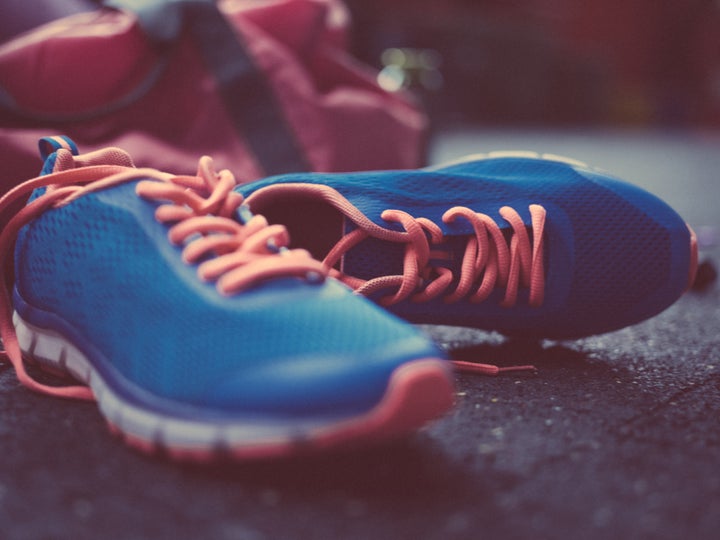
While buying two identical pairs of running shoes might seem like overkill, "It's usually hard to find the same shoe again," Goldstein explained. "This way you can alternate between the two pairs of shoes, so you’re not overusing one of them."
While this tip makes most sense for runners who are training for a marathon or half-marathon and putting in lots of miles, if you find a pair of shoes you love, by all means, buy two pairs.
"One you would train a little bit less in, so that you have them for race day," she said. "You want to make sure they’re broken in so you don’t get blisters. You don’t want [race day] to be the first time that you’re wearing the shoes."
There are different schools of thought on when to replace running shoes. Some experts recommend replacing shoes after 300 to 500 miles, while others think it's okay to keep your shoes longer, especially if you're not running on asphalt.
"I think just looking at the bottom of the shoe, you can see where it’s worn out and that will give you an idea that it’s time for new shoes," Goldstein said.
7. Don't worry about the treadmill haters
There are two types of runners in this world: outdoor evangelists and treadmill devotees. And despite anything you might hear to the contrary, there is no right place to run. The outdoors and the treadmill each have advantages and disadvantages.
For safety purposes, the treadmill is king. "The treadmill is actually better for you than concrete," Goldstein explained. "It has shock absorption, so if you are someone who’s injury-prone, it might be a good idea to start out on a treadmill, as opposed to concrete, and then build up your mileage from there."
On the other hand, running on the treadmill is less intense than running outside, because the treadmill belt is assisting your stride. And some people find it boring.
"I prefer to run outside," Goldstein said. "But as a novice runner, the treadmill is much easier on your joints."
If you're lucky enough to live near a track, you can take advantage of having the best of both worlds: shock absorption and greenery. "It’s always better to run on a track," Ardito said.
However, he noted that a treadmill is a great place for beginner runners: "It’s not going to replace running outdoors or on a track, but it definitely helps you with fat loss and cardiovascular goals," he said.
In other words, ignore the haters. Wherever you feel most motivated and comfortable running safely is where you should train, period.

